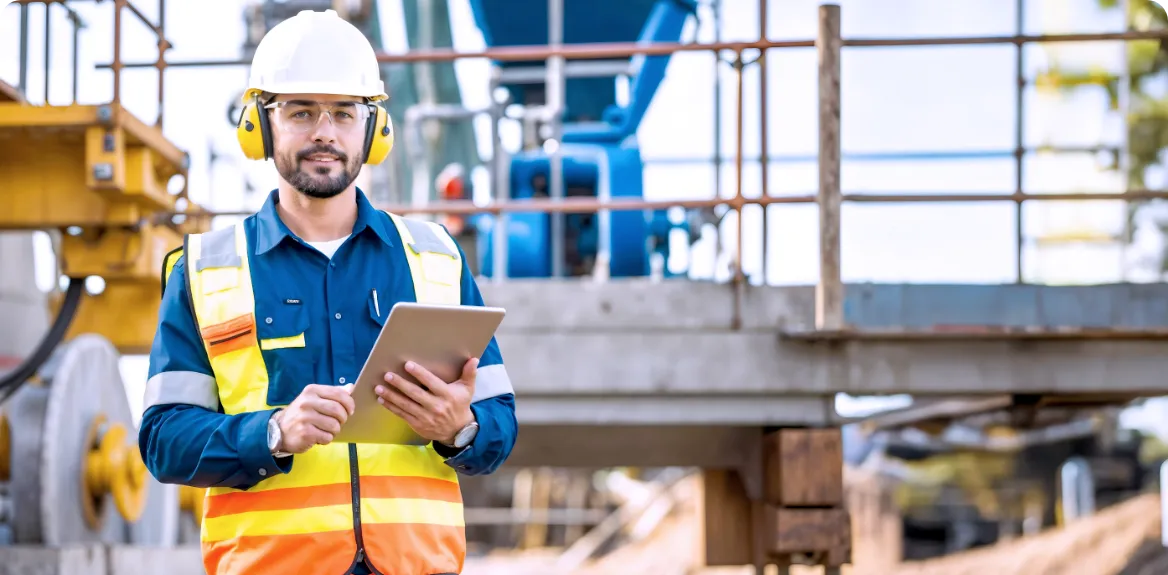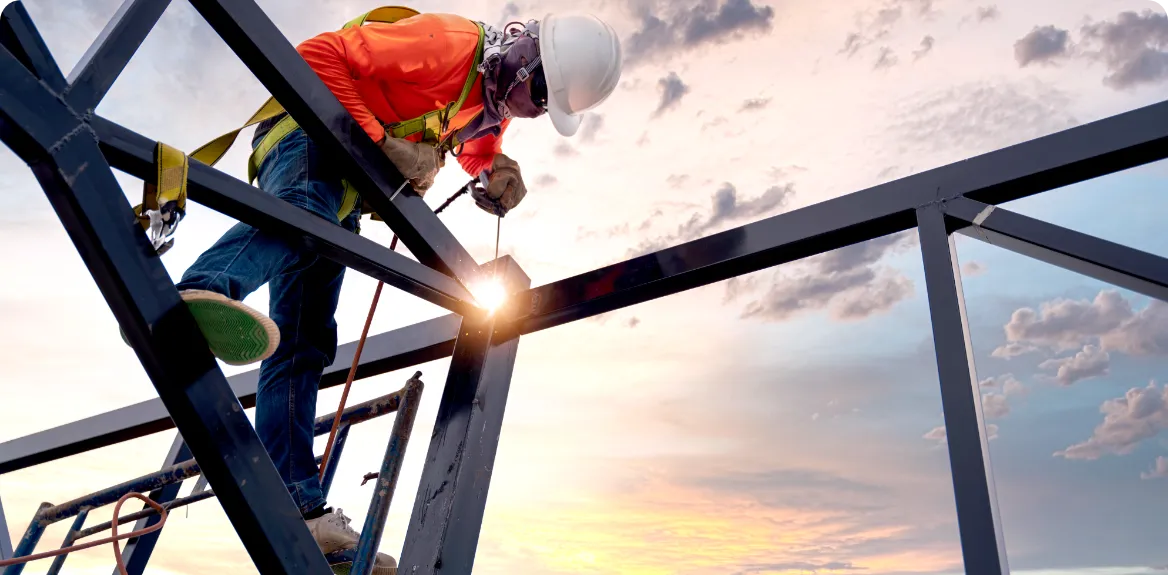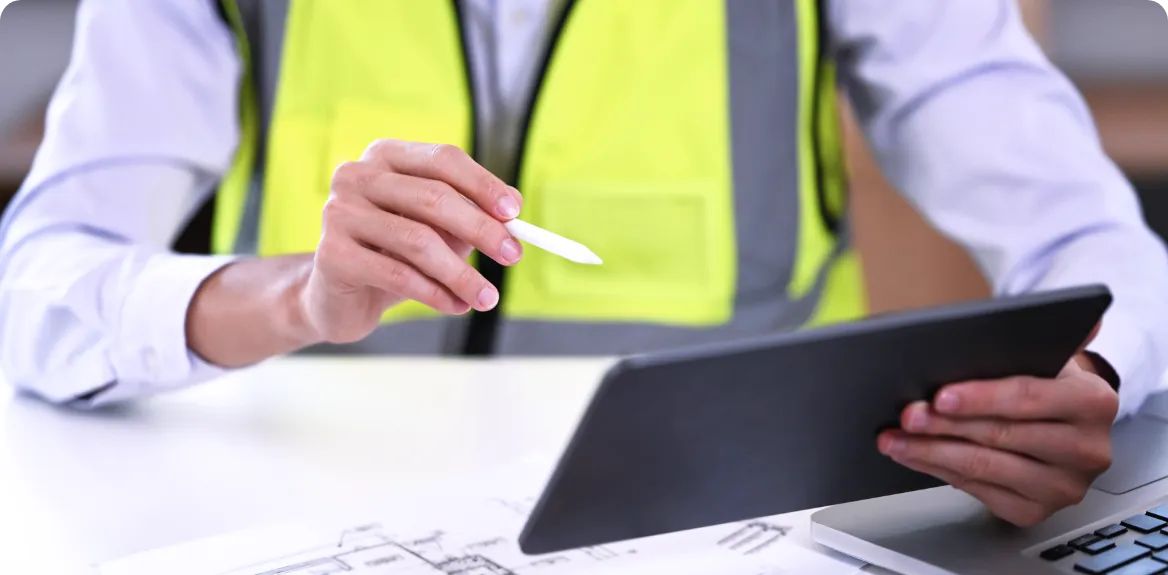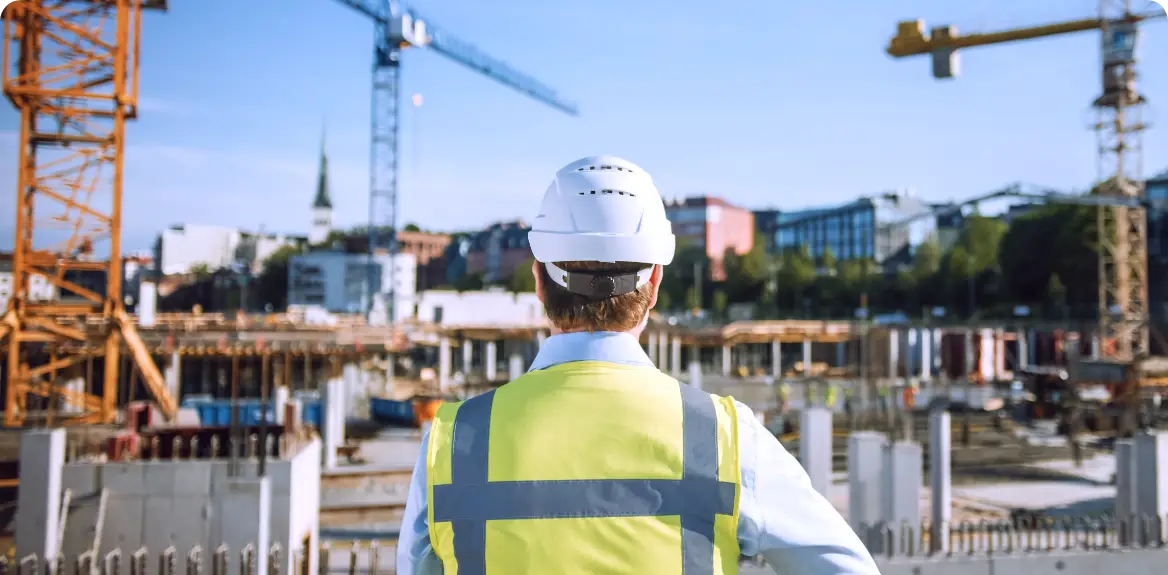
AI is transforming safety management in construction and engineering by automating compliance, detecting hazards in real-time, and predicting risks. These innovations improve safety outcomes while streamlining compliance processes and boosting productivity.
In the construction and engineering industries, safety compliance is a crucial yet complex aspect of project management. With escalating project complexities, changing regulatory demands, and an ever-increasing need for real-time hazard detection, businesses must adapt to new technologies that streamline compliance processes and ensure worker safety. One such technology that is revolutionizing this field is Artificial Intelligence (AI), which has shown immense potential in improving safety compliance management.
As of 2024, AI-driven safety solutions have helped the construction industry see a 30% increase in revenue, underscoring the significant role AI plays in this transformation.
This article explores how AI is shaping the future of safety compliance management in construction and engineering, addressing common challenges and providing actionable insights for businesses looking to leverage AI-driven solutions for safety, efficiency, and compliance.
AI is playing an increasingly central role in transforming safety compliance management in the construction and engineering industries. By automating processes and enhancing decision-making, AI helps ensure that safety protocols are adhered to, risks are minimized, and operations run smoothly.
AI-driven solutions have drastically improved safety compliance management in construction and engineering by enabling smarter monitoring and decision-making processes. With AI systems, companies can automate the analysis of vast amounts of data, detect patterns related to potential safety risks, and assess compliance with regulatory standards in real-time. These AI tools not only enhance the efficiency of compliance management but also help companies reduce the likelihood of costly regulatory violations by ensuring that all safety measures are met.
For instance, machine learning algorithms continuously analyze site data to identify trends and predict safety risks, while computer vision-powered systems monitor the construction environment for hazards such as unsafe equipment usage, worker behavior, or environmental factors. AI is transforming safety management from a reactive approach to a proactive, data-driven strategy that improves compliance and reduces risks significantly.
Several AI technologies are at the forefront of revolutionizing safety compliance in the construction and engineering industries, driving better decision-making and risk management practices. These technologies include:
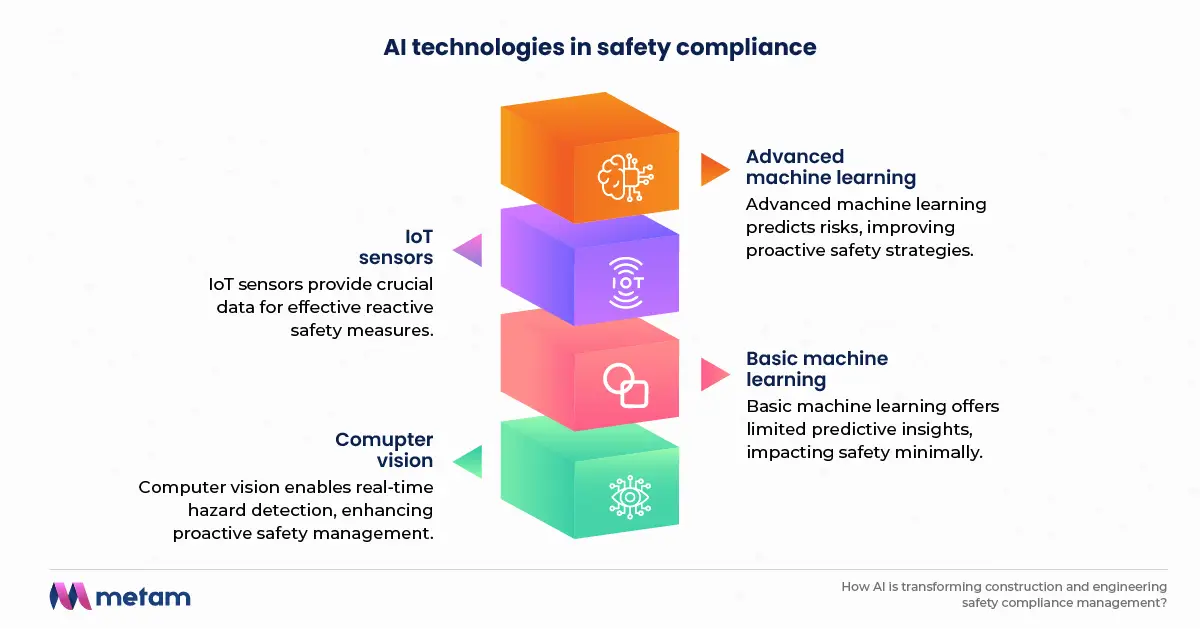
Ensuring compliance with complex regulatory frameworks, such as OSHA standards in the U.S., is a significant challenge for construction companies. AI is increasingly being used to automate compliance processes, making it easier to adhere to regulations and avoid costly violations. AI systems can automatically generate compliance reports, monitor safety procedures in real-time, and alert management when a safety protocol is not being followed.
For example, AI-driven compliance tools can track worker certifications, equipment inspections, and site safety checks, ensuring that all necessary actions are taken and properly documented. This automation helps companies stay up-to-date with regulatory requirements and reduces the risk of penalties for non-compliance.
The future of AI in safety compliance management looks even more promising, with advancements in predictive safety measures, real-time intervention systems, and autonomous safety monitoring tools. AI is expected to enhance its predictive capabilities, allowing for even more precise hazard detection and prevention. Additionally, AI-powered drones, wearables, and robotics will play an increasingly significant role in automating site inspections and reducing human error in safety management.
AI is enabling real-time hazard detection on construction sites, providing safety managers with instant alerts and actionable insights that can prevent accidents before they happen.
AI systems powered by machine learning algorithms and computer vision technologies are revolutionizing the way construction sites are monitored for hazards. By analyzing live footage from cameras and data from IoT sensors, AI can detect potential risks in real-time, such as unsafe behavior, faulty equipment, or hazardous environmental conditions. This real-time monitoring enables construction firms to identify issues quickly and take corrective action before accidents occur.
For instance, AI can spot worker movements that indicate fatigue or unsafe practices, such as standing too close to heavy machinery or engaging in risky actions near unguarded areas. By offering immediate feedback, AI systems help prevent injuries and ensure a safer working environment.
AI's ability to analyze historical data and detect patterns is an invaluable tool in predicting safety risks. Predictive analytics uses past incident data to forecast where and when accidents are most likely to happen, allowing safety managers to take proactive measures to prevent incidents. This could involve adjusting workflows, reinforcing safety protocols, or providing additional training for workers.
For example, if AI identifies that certain tasks or environmental conditions correlate with a higher risk of accidents, it can provide targeted recommendations to improve safety and reduce risk. This proactive approach enhances safety management by allowing companies to mitigate hazards before they occur.
AI-powered wearables, such as smart helmets, vests, and wristbands, are enhancing worker safety by providing real-time alerts for potential hazards. These wearables track workers' biometric data (e.g., fatigue, heart rate) and environmental factors (e.g., gas leaks, temperature) to ensure that workers are not exposed to dangerous conditions. When an issue is detected, wearables can send instant alerts to the worker or site manager, prompting immediate action.
By incorporating AI into wearable technology, construction companies can enhance their safety protocols, ensuring that workers are better protected from potential hazards and minimizing human error in safety management.
Drones equipped with AI technology are playing a crucial role in surveying large construction sites and identifying safety risks. These AI-enabled drones can monitor hard-to-reach areas, detect hazards such as unstable structures or falling debris, and provide real-time insights to site managers. Drones help improve safety monitoring by offering a bird's-eye view of the site, making it easier to spot potential issues that might be missed through traditional inspection methods.
AI is revolutionizing the way construction and engineering companies manage their compliance documentation. From automating the creation of compliance reports to ensuring data accuracy, AI streamlines the entire compliance process, improving efficiency and reducing the risk of human error.
One of the primary benefits of AI in safety compliance is the automation of compliance reporting. By using AI-driven tools, construction companies can generate reports automatically, eliminating the need for manual data entry and reducing the time spent on paperwork. This automation improves the accuracy and efficiency of compliance reporting, ensuring that companies can quickly respond to audits and inspections without the risk of errors.
AI systems can also track changes in regulatory requirements and update compliance reports in real-time, ensuring that companies remain compliant with the latest standards. This continuous monitoring eliminates the need for manual updates and reduces the chances of regulatory violations.
AI ensures that safety documentation is accurate and up-to-date, reducing the risk of errors in safety protocols. By automating the documentation process, AI can ensure that all necessary safety checks, inspections, and procedures are recorded correctly and that the data is easily accessible for audits or regulatory inspections. This real-time data management enhances safety documentation accuracy and ensures that companies meet all regulatory requirements.
AI-driven digital checklists are transforming the way construction sites conduct compliance audits. These checklists automatically track safety measures in real time, ensuring that every safety step is followed and validated. With the ability to cross-check data against regulatory requirements, AI-driven checklists help minimize human error and ensure that all necessary actions are completed.
By streamlining the auditing process, AI ensures that no safety protocols are missed, improving both compliance and overall site safety. These checklists are especially valuable during inspections and audits, as they can quickly generate a comprehensive record of all safety measures taken.
AI systems significantly reduce the risk of human error in safety compliance by automating repetitive tasks such as data entry, reporting, and monitoring. This automation ensures that safety protocols are followed accurately and consistently, without the need for manual oversight. By reducing human intervention, AI not only enhances safety compliance but also minimizes the risk of costly mistakes that could lead to regulatory violations or accidents.
AI is making it possible to manage safety more proactively than ever before. With advanced risk assessments, real-time monitoring, and emergency response planning tools, AI helps engineering and construction projects stay ahead of safety issues before they escalate.
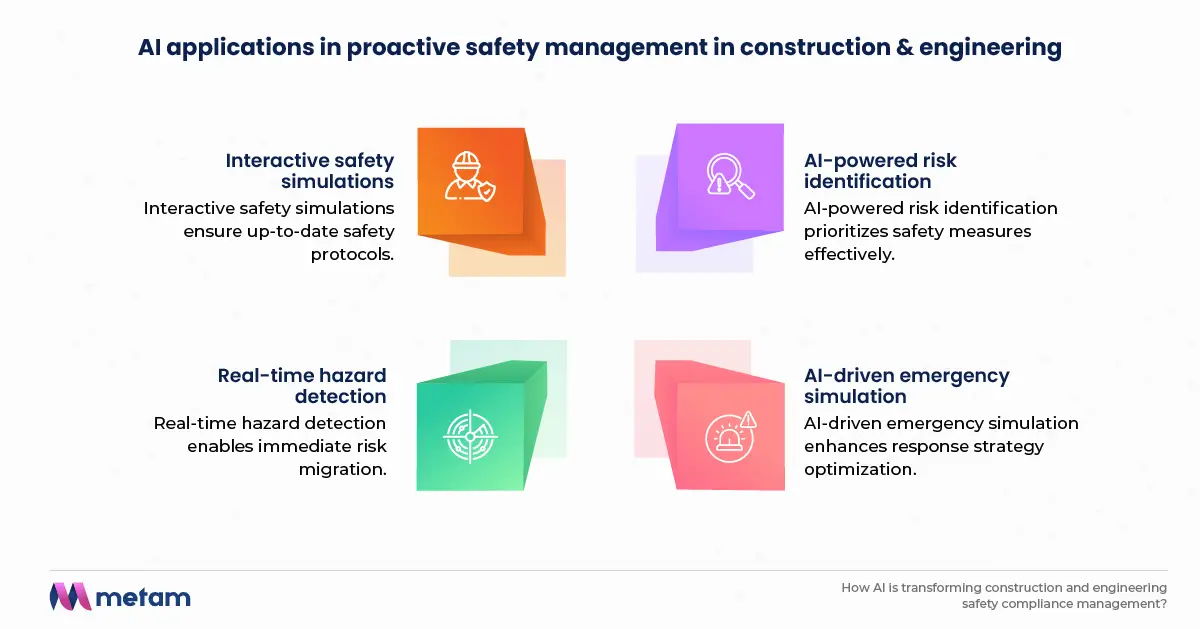
Implementing AI-driven safety compliance solutions comes with its own set of challenges. From data security concerns to the cost of implementation, companies need to address several key issues to successfully integrate AI into their safety management practices.
At Metam Technologies, digital solutions leverage advanced AI capabilities to enhance safety, streamline compliance, and minimize operational risks. These tools help construction and engineering companies take a proactive approach to safety management, ensuring regulatory standards are met while safeguarding workers and boosting productivity.
By enabling data-driven decision-making, these solutions go beyond regulatory adherence to actively improve site safety. Tailored to meet specific project needs, they offer real-time monitoring, predictive risk analysis, and simplified compliance management, all working together to optimize safety and efficiency.
AI is playing a transformative role in safety compliance management within the construction and engineering industries. Through its ability to automate processes, detect hazards in real-time, and enhance regulatory adherence, AI is revolutionizing safety protocols.
Predictive analytics and real-time monitoring are helping to proactively identify and mitigate risks before they escalate, improving safety outcomes across the board. Additionally, AI-driven solutions streamline compliance reporting, ensuring that documentation is accurate, up-to-date, and easily accessible for audits or inspections.
Ultimately, adopting AI in safety management leads to safer work environments, reduced risks, and enhanced productivity across the industry.
